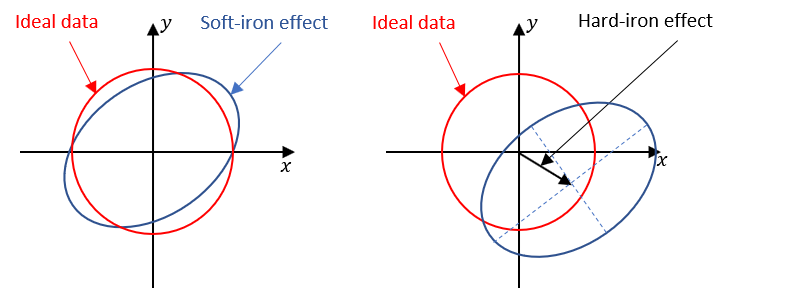magcal
Magnetometer calibration coefficients
Description
Examples
Input Arguments
Output Arguments
More About
References
[1] Ozyagcilar, T. "Calibrating an eCompass in the Presence of Hard and Soft-iron Interference." Freescale Semiconductor Ltd. 1992, pp. 1-17.

